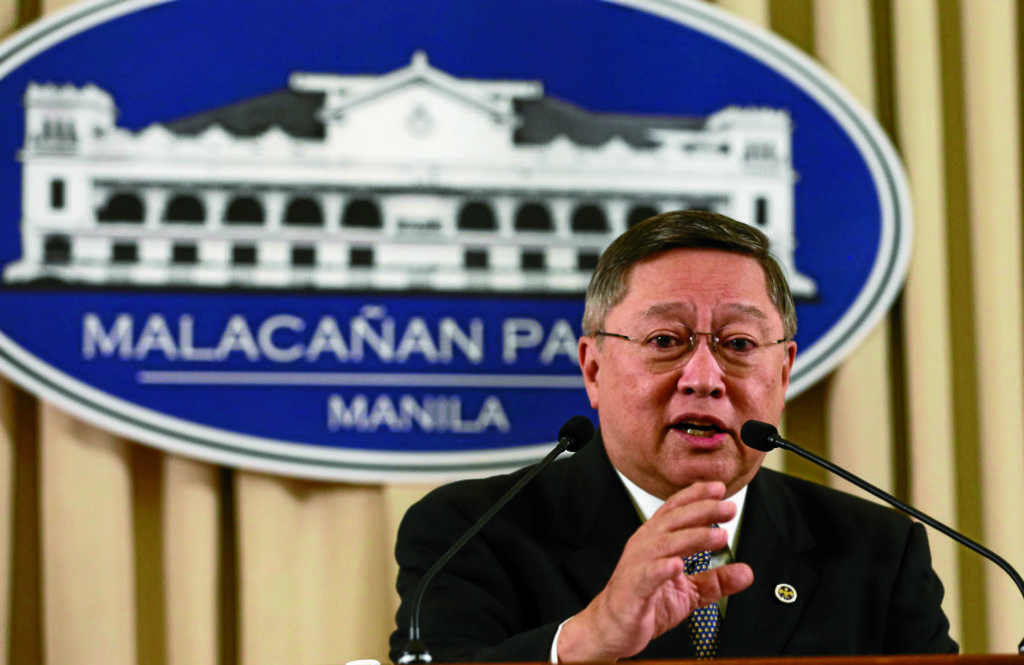The economic strategy of President Duterte is bearing fruit, with GDP (gross domestic product) growing 6.68 percent during his first three quarters, or “faster than [those of] all other administrations,” Finance Secretary Carlos Dominguez said on Thursday.
“We expect to grow close to the targeted 7 percent throughout the year,” he said.
Dominguez noted that the average inflation rate for the first 11 months of the administration is 2.64 percent.
“Again, this is the lowest registered of all previous administrations,” he said.
Moreover, he said, the national government debt as a percentage of GDP declined from 43 percent as of the end of June 2016 to 41.9 percent by the end of March.
“The reduced debt load allows us enough flexibility to pump-prime our economy,” he said.
“With the passage of the Comprehensive Tax Reform Program, we can guarantee a breakout growth of above 7 percent and sustain this into the medium term,” the finance chief said.
Dominguez said the faster economic growth would enable the government to bring down the poverty rate from 21.6 percent today to 14 percent in 2022.
‘Fiscally secure’
The country, he said, was “fiscally secure” as the government collected P2.09 trillion in revenue from July 2016 to May this year.
“That is 7 percent higher than the same period the previous year,” he said.
Dominguez said the Bureau of Customs confiscated P8.4 billion in smuggled goods from August 2016 to June, or seven and a half times more than the P1.2 billion seized in smuggled goods registered in 2015.
Learning from the previous administration’s experience, Malacañang has opted not to use public-private partnerships (PPPs) in funding major infrastructure projects so that these could at least get started on time.
Dominguez said a review of the PPPs showed that it took three years for a PPP-financed project to get off the ground.
“That’s why the last administration was only able to do four projects, right? Because the PPP process is very long,” he said.
“We cannot wait to negotiate for three years, then after three years, ‘OK, this is only when we start.’ We can’t do that. We have to start now,” he added.
P3.6-T infra program
The Duterte administration is embarking on a P3.6-trillion infrastructure program that will be funded through a tax reform program and new loans.
“We know that we don’t have to go through the long negotiations for the PPP, OK. Now, we have a large capacity to borrow. And our interest rate that we pay is lower than the interest rate that the private sector pays,” Dominguez said.
He pointed out that the government retained the option of turning existing projects into PPPs.
“Once the project started, or… even in the middle of the project, we can turn it over and make it PPP. We can sell the project and we can use the funds to repay our loan,” he said.
Dominguez said this could be done in operation and maintenance (O&M) projects.
“We’ll start the project, and most likely, we will use public-private partnerships for the O&M portion because the government is not good at O&M,” he said.
